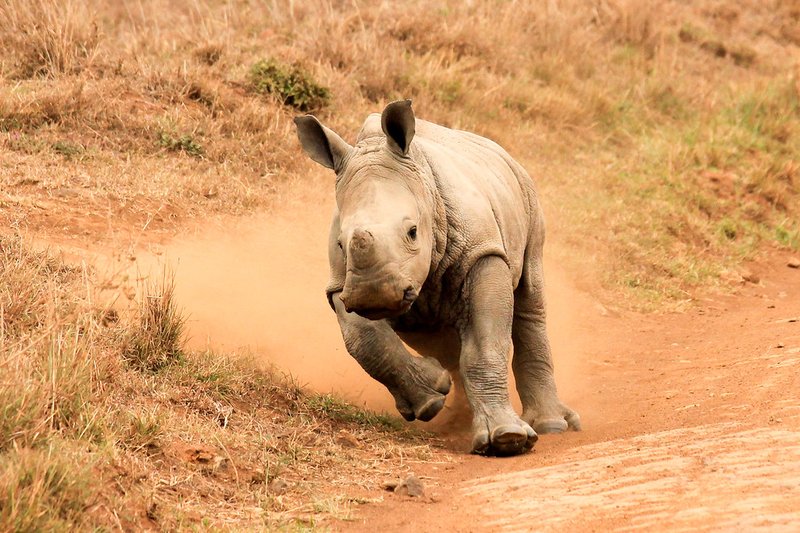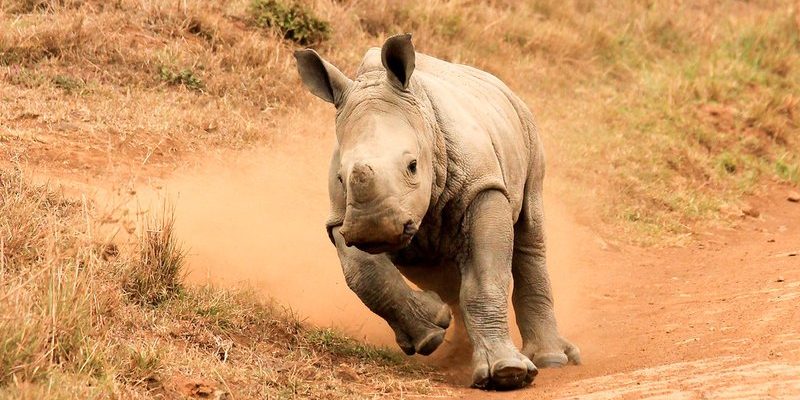
Raising a young rhino isn’t just about survival; it’s a blend of teaching life skills, protecting against predators, and forming strong bonds. Imagine being in a vast, open space where dangers lurk, and your little one is entirely dependent on you to guide them. That’s daily life for a mother white rhino. They face challenges that are both daunting and awe-inspiring, showcasing a commitment to family that’s remarkable, even in the animal kingdom.
Understanding the White Rhinoceros Family Structure
White rhinoceroses are social animals, but their family structure is quite unique. Typically, a mother and her calf form a close-knit duo, often seen grazing together or resting under the shade of a tree. A mother rhino is fiercely protective, making her bond with her calf one of the strongest in the animal world.
Rhinos can have a complex social life, but unlike elephants, they tend to be solitary. The mother-calf relationship is where all the action happens. When a rhino calf is born, it’s a significant event. Weighing up to 100 pounds at birth, the calf is already a notable presence. The first few years are crucial; this is when the mother shares vital survival skills with her offspring.
The Role of the Mother
Here’s the thing: the mother is the primary caregiver, and her role is all-encompassing. Not only does she provide food, but she also teaches vital skills. From how to find water to recognizing dangers, a mother rhino is a coach in the wild.
She’ll lead her calf to feeding grounds, where they munch on grasses and leaves. Young rhinos learn through observation and imitation. If the mother senses danger, she’ll demonstrate how to look for cover or retreat to a safer place.
Protection is key in this phase. Mothers will vocalize warnings and even physically intervene if they sense a threat, showing just how far a rhino will go to protect her young. This behavior not only ensures the calf’s survival but also strengthens their bond.
Calf Independence: The Transition Phase
As the calf grows, the relationship between mother and child evolves. Typically, a white rhino calf will stay close to its mother for around three years. However, as they approach maturity, their independence begins to develop. You might be wondering, how does this shift happen?
In the wild, calves gradually start to explore their surroundings. This newfound freedom is vital. It allows them to learn the lay of the land and identify food sources. The mother encourages exploration while keeping a watchful eye—a bit like a parent watching their child take their first steps.
This phase is filled with small adventures. Young rhinos might wander a few paces away to nibble on fresh grass, only to return quickly to the safety of their mother. This balance between independence and safety is a delicate dance in the wild.
Learning Through Play
Playtime is another essential part of a young rhino’s development. Rhinos, especially calves, engage in playful behavior, which is crucial for both physical and social skills. They’ll often spar gently with each other, practicing their strength, agility, and social etiquette.
These playful moments might look chaotic, but they serve a purpose. Through play, calves learn how to interact with other rhinos, developing vital social skills. Plus, it helps them stay physically fit and prepares them for the challenges of adulthood.
Challenges Faced by Young Rhinos
Even with a doting mother by their side, young rhinos face various challenges that test their survival skills. One of the most formidable threats is predation. While adult rhinos have few natural enemies, calves are vulnerable to predators like lions.
In the wild, young rhinos are taught to recognize signs of danger early on. A mother rhino is quick to use her bulk to shield her calf during an attack or noise. This kind of harsh lesson is unfortunately part of life in the wilderness and highlights the stakes involved in raising young rhinos.
Habitat loss is another serious concern. As human activities encroach on natural habitats, young rhinos are often forced to navigate new threats in environments that can be hostile or unfamiliar. A mother’s ability to guide her calf through these challenges is more critical than ever.
Mother-Calf Bond: A Lifelong Connection
The bond between a mother and her calf is truly special. Even after the calf becomes more independent, this relationship remains significant. You might notice that older calves often stick around their mothers longer than seen in other species.
This connection carries emotional weight. Mothers often recognize their offspring even years later! It’s not just about survival; there’s a deep-rooted familiarity and care in their interactions, almost like a reunion when they meet again.
In fact, studies suggest that maintaining these relationships contributes to the social dynamics of white rhinos. It’s a legacy of knowledge passed from one generation to the next, key to thriving in the wild.
Conservation Efforts and the Future
Given the challenges white rhinos face, conservation efforts are crucial. Protecting mothers and their young is essential for the species’ survival. Organizations work tirelessly to combat poaching and habitat loss, ensuring that these majestic creatures have the best chance at life.
You might find it inspiring to know that in some regions, community-based conservation programs involve local residents in protecting rhino populations. By teaching the importance of preserving these animals, they help safeguard the future of white rhinos and their calves.
Ultimately, it’s a shared responsibility. Understanding how white rhinoceroses raise their young helps build awareness, and knowledge is power. When we learn about their struggles, we become better advocates for their protection.
In conclusion, the journey of a white rhinoceros raising her young in the wild is a remarkable story of *love*, *nurturing*, and *survival*. From the moment of birth, the bond between mother and calf sets the stage for everything that follows—a dance of teaching skills, facing dangers, and forming a lifelong connection.
As we continue to learn about and protect these incredible creatures, we also remind ourselves of the beauty and fragility of life in the wild. So next time you think of white rhinos, remember the powerful, devoted bonds they form and the challenges they face—and consider what we can do to help them thrive in the wild.

